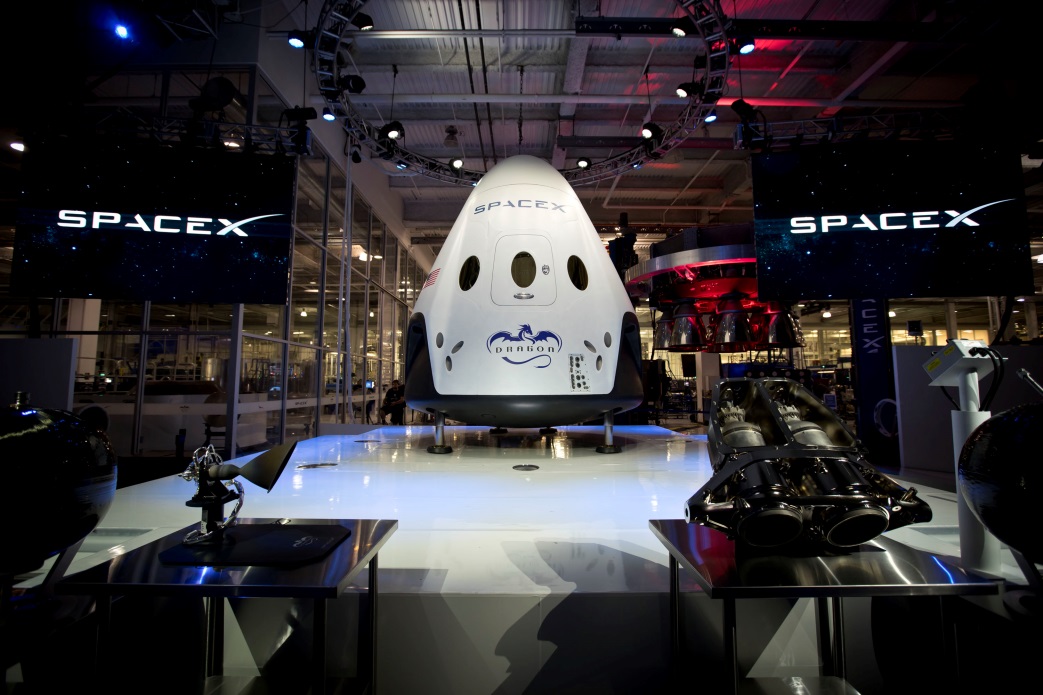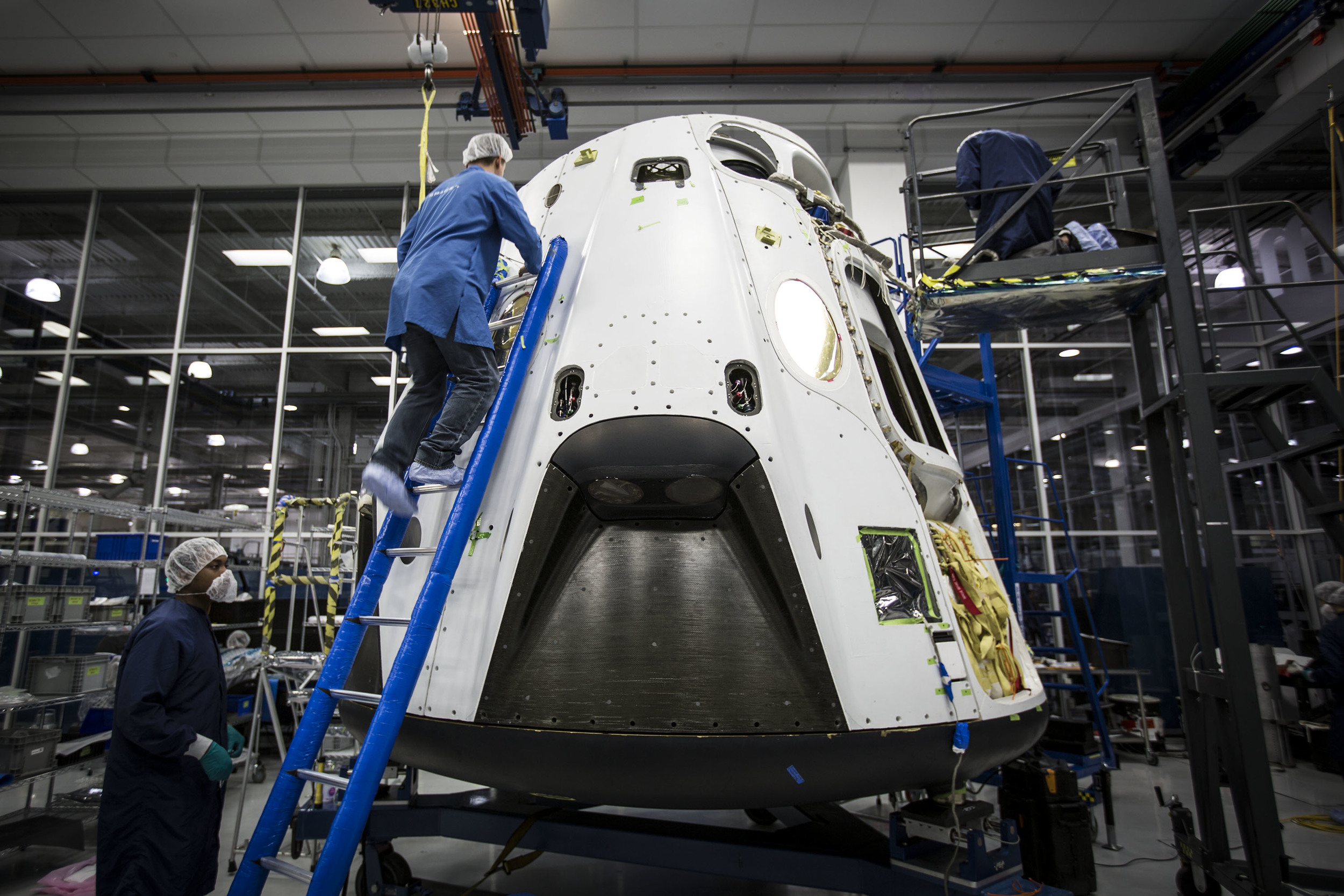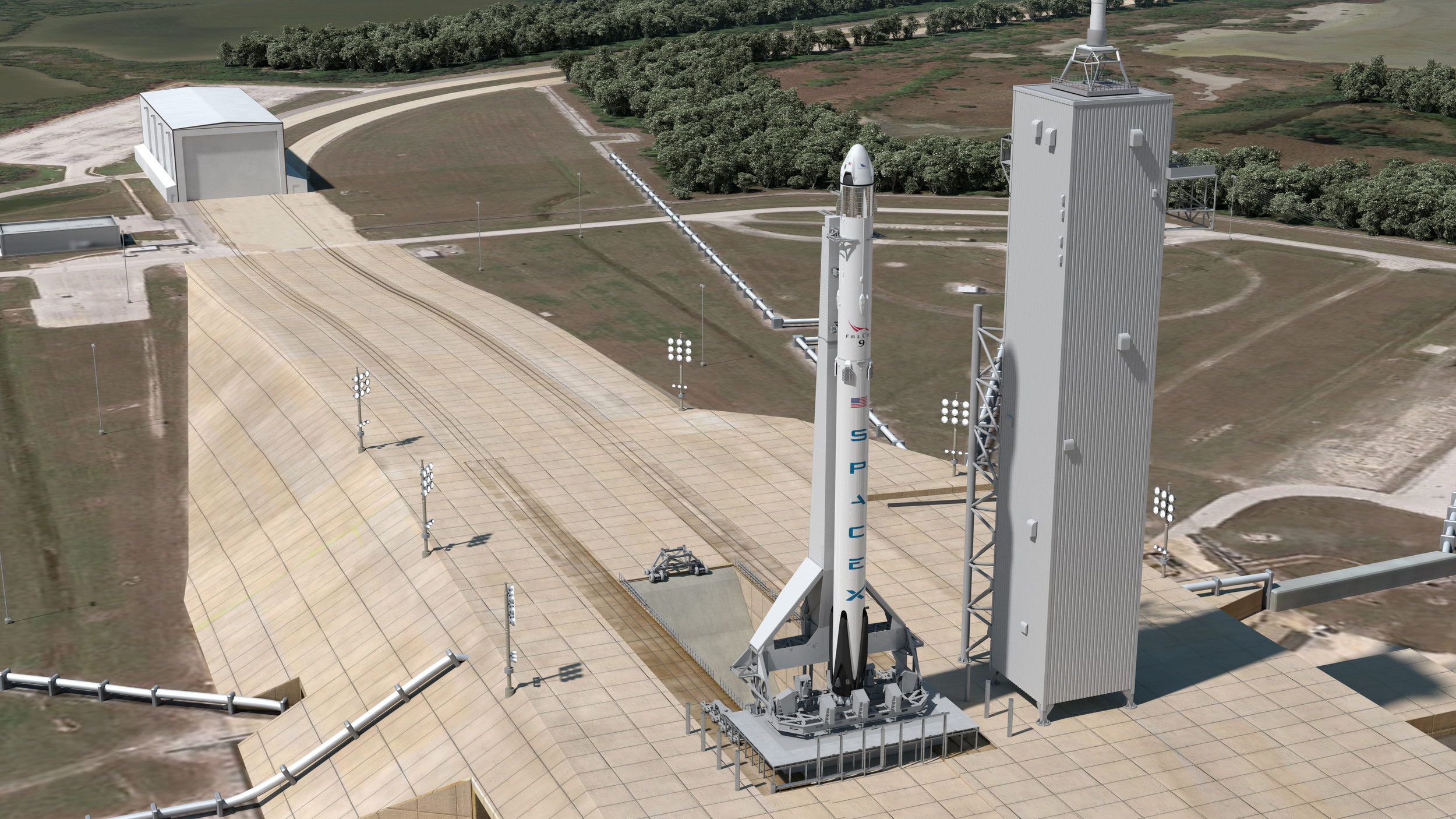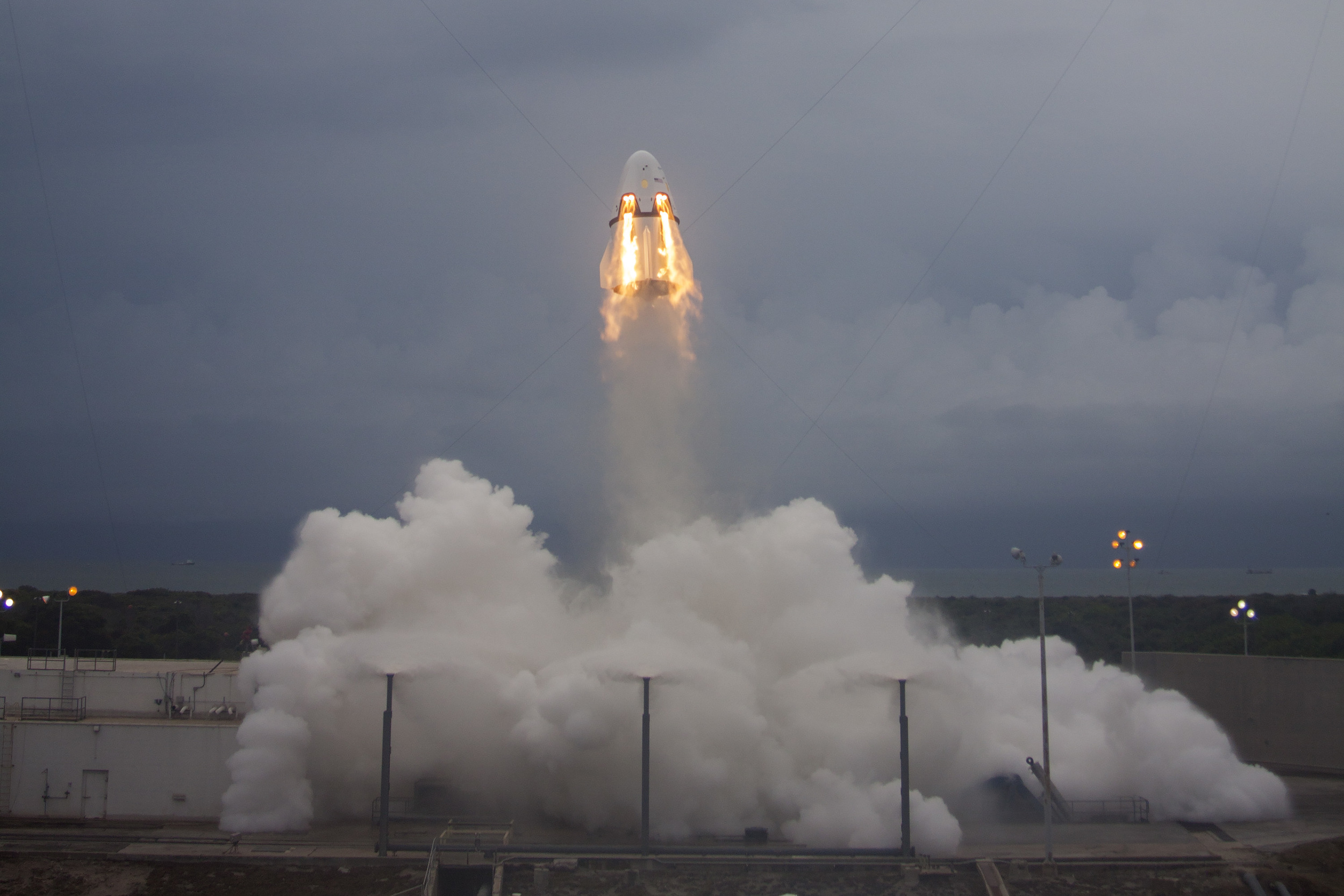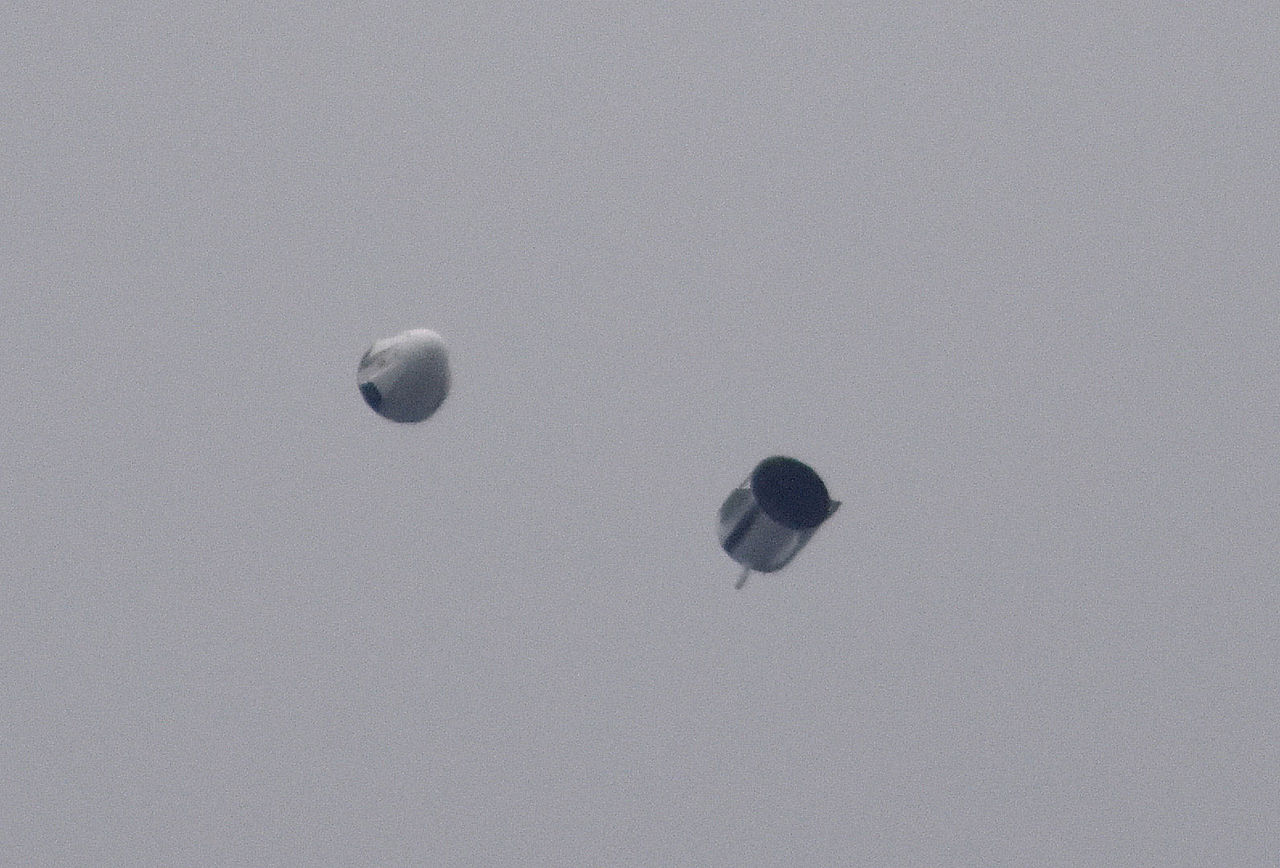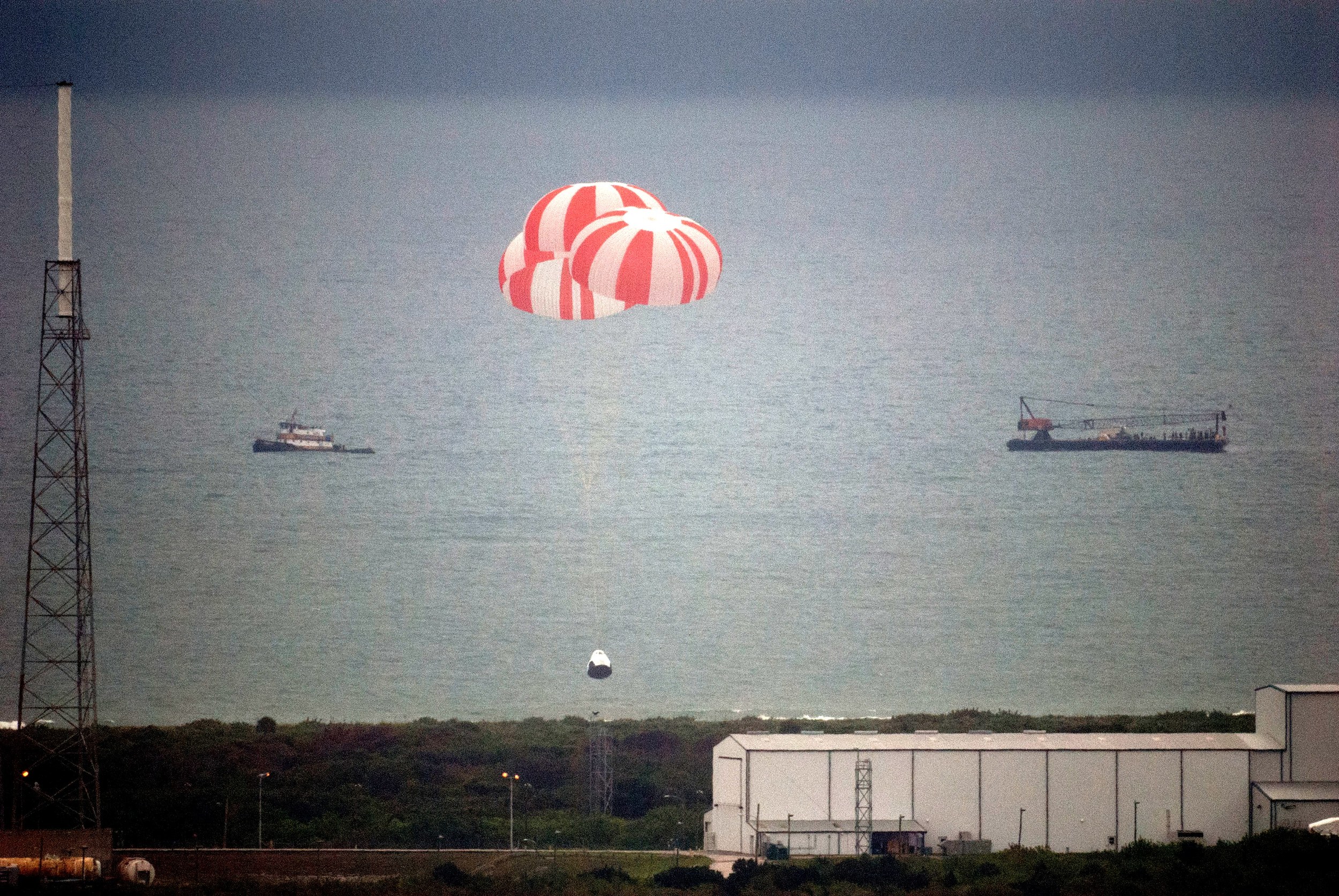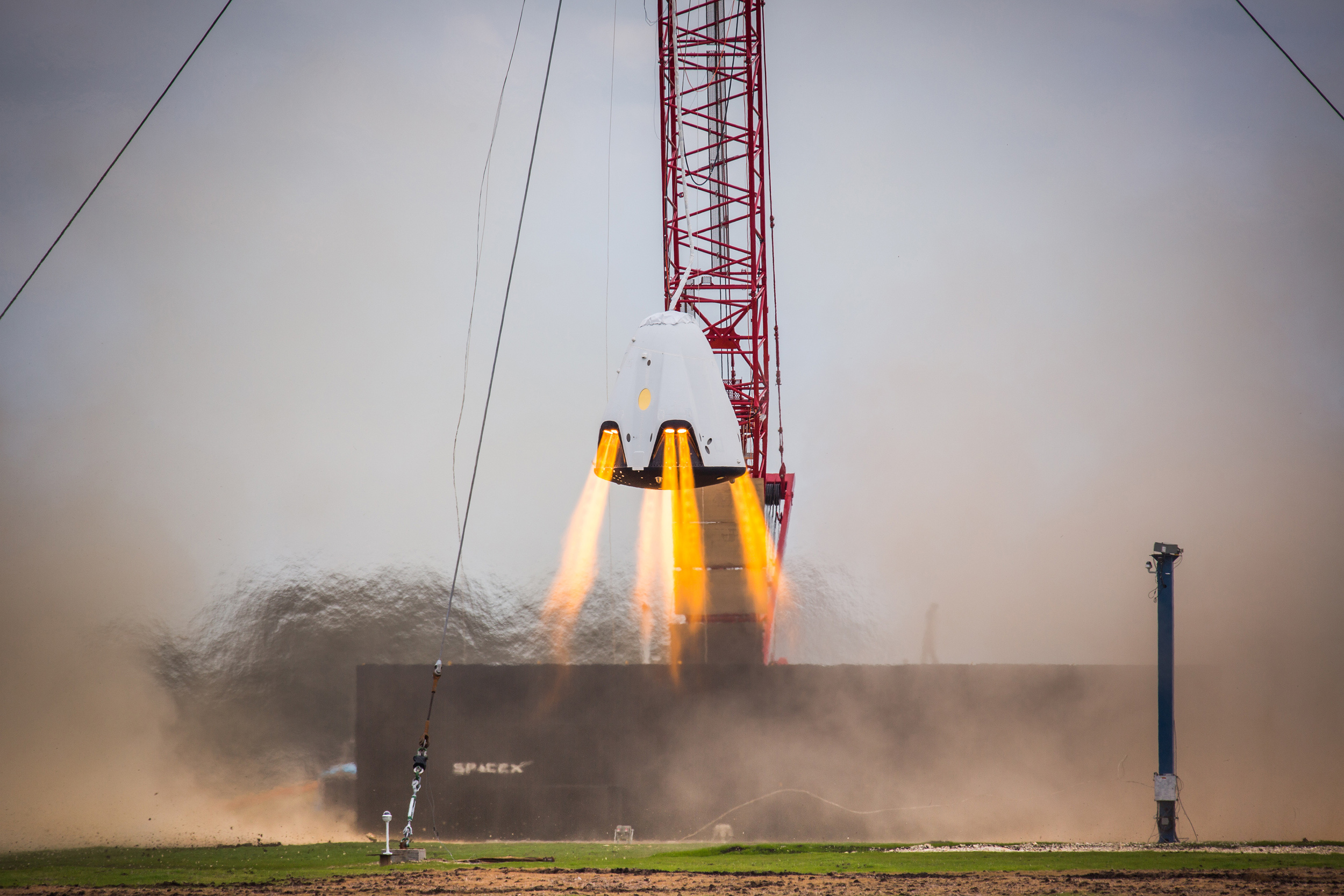Crew Dragon builds on experience with ISS resupply
SpaceX developed a human-rated version of its Dragon spacecraft for NASA's Commercial Crew Development program.
The company took the lessons learned from the many cargo flights of first version of the capsule and took the design to the next level. For crew safety, it incorporates an integrated "pusher" launch escape system powered by SuperDraco thrusters.
Initially, the SuperDraco thrusters were to double as landing engines. However, the company scrapped that idea in 2017.
The spacecraft is designed to be able to carry as many as seven people to and from the International Space Station, or any other space station with an International Docking Standard adapter. However, regular missions for NASA are expected to include only four people.
SpaceX conducted a Pad Abort test in May 2015 and performed an in-flight abort test in January 2020. The first unpiloted orbital test flight occurred in March 2019 and the first piloted test launched into space with two NASA astronauts in May 2020.
— Quick facts —
Basics
Country: United States
Operator: SpaceX
Manufacturer: SpaceX
Launch site: Kennedy Space Center, Florida
Launch vehicle: Falcon 9
Reusable: Yes
Specifications
Dry mass: 9,500 kg
Height: 8.1 m (including trunk)
Capsule diameter: 3.7 m
Launch payload mass: 6,000 kg
Return payload mass: 3,000 kg
Max. crew size: 7 (NASA plans 4)
Orbital life: 210 days docked
Flight history
First flight: Demo-1, March 2, 2019
Failures: 0
Stations serviced: ISS
Status: Active
— Sections —
Capsule
Width: 3.7 meters
Height: 4.5 meters
Volume: 9.3 cubic meters
While similar in shape to SpaceX’s cargo variant, Crew Dragon sports several key distinctions.
First, it has four protrusions that hold a total of eight Super Draco thrusters. These engines will be used as a launch escape system to push the vehicle and its crew away from the Falcon 9 in the event of an issue. This feature was first tested in a May 2015 abort test and verified in-flight in January 2020.
A second feature of Crew Dragon is its nose cone, which protects the spacecraft’s docking mechanism. Rather than discarding it during its ascent into orbit, it stays with the vehicle and opens in orbit to reveal the docking ring. It also protects the ring during re-entry.
The interior of Crew Dragon is has a three-screen touch screen panel that crews can use to control the vehicle and monitor its systems. Only the most-essential control features have physical interfaces.
Crew Dragon’s capsule sports four parachutes to help the capsule descend slowly toward an ocean splashdown after its mission.
Trunk
Width: 3.7 meters (not including fins)
Height: ~3.6 meters
Trunk volume: 37 cubic meters
The trunk section of Crew Dragon will function similarly to that of the cargo variant. The main difference, however, is that the spacecraft’s solar cells and heat-removing radiators are physically on the body of the trunk, rather than on extendable panels. Additionally, Crew Dragon has aerodynamic fins designed to stabilize the vehicle should a pad or in-flight abort occur.
Inside the trunk is a space for external hardware that could be brought to the International Space Station during either crew or cargo missions.
After the spacecraft’s mission is complete, it is designed to detach from the capsule before a deorbit burn. The trunk is not reusable and will eventually burn up upon re-entry.
Notes and further reading:
“Dragon.” SpaceX. March 2, 2019. Accessed March 18, 2019. https://www.spacex.com/dragon
”How SpaceX and Boeing will get Astronauts to the ISS.” Everyday Astronaut. Feb. 22, 2019. Accessed March 18, 2019. https://everydayastronaut.com/crew-dragon-vs-starliner/
“SpaceX Crew Dragon Splashdown Marks Success of First NASA Commercial Crew Flight Test.” NASA. March 8, 2019. Accessed March 18, 2019. https://www.nasa.gov/press-release/spacex-crew-dragon-splashdown-marks-success-of-first-nasa-commercial-crew-flight-test



